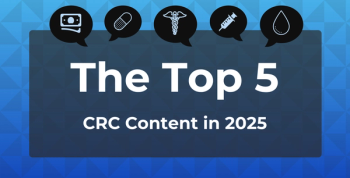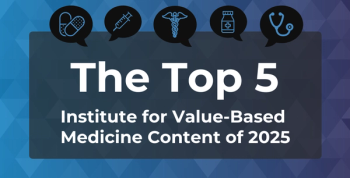
The American Journal of Managed Care
- August 2025
- Volume 31
- Issue 8
- Pages: e235-e237
Racial/Ethnic Differences in Colorectal Cancer Screening in the US
Key Takeaways
Data from the 2021 National Health Interview Survey showed racial/ethnic differences in colorectal cancer screening were due to demographic and socioeconomic factors, except for low colonoscopy use in Asian individuals.
ABSTRACT
Objectives: There are well-known racial/ethnic differences in colorectal cancer (CRC) screening in the US. This study aimed to assess whether racial/ethnic differences in CRC screening persisted in 2021 and how demographic and socioeconomic factors contributed to these differences.
Study Design: Population-based study.
Methods: All adults aged 50 to 75 years in the 2021 National Health Interview Survey were included. The rate of CRC screening was calculated for non-Hispanic White, Black/African American, Hispanic, and Asian individuals. Multivariate logistic regression was used to examine racial/ethnic differences in CRC screening, controlling for age, sex, immigrant status (vs born in the US), college education (vs no college education), and insured status (vs uninsured status).
Results: The rate of CRC screening was highest in the non-Hispanic White group (74.4%), followed by the Black/African American (70.9%), Hispanic (61.7%), and Asian (59.5%) groups (P < .01). In multivariate logistic regression, there was no significant racial/ethnic difference in CRC screening after controlling for age (OR, 1.07; 95% CI, 1.06-1.08), female sex (OR, 1.08; 95% CI, 0.997-1.18), immigrant status (OR, 0.62; 95% CI, 0.54-0.70), college education (OR, 1.65; 95% CI, 1.52-1.80), and insured status (OR, 4.38; 95% CI, 3.67-5.23). Sensitivity analysis on colonoscopy use confirmed these findings, except for less colonoscopy use in Asian individuals (OR, 0.73; 95% CI, 0.60-0.89).
Conclusions: Racial/ethnic differences in CRC screening in the US were due to differences in demographic and socioeconomic factors, except for persistently low colonoscopy use in Asian individuals.
Am J Manag Care. 2025;31(8):e235-e237.
Takeaway Points
Analyses of data from the 2021 National Health Interview Survey show that racial/ethnic differences in colorectal cancer (CRC) screening were due to differences in demographic and socioeconomic factors, except for low colonoscopy use in Asian individuals.
- Racial/ethnic differences in CRC screening persisted in the US in 2021.
- Age, immigrant status, college education, and insured status explained the racial/ethnic differences in CRC screening.
- One notable exception is the low use of colonoscopy for CRC screening in Asian individuals.
Rates of colorectal cancer (CRC) screening differ significantly by racial/ethnic group in the US and are lower in non-White minority groups compared with non-Hispanic White individuals.1-3 In addition to race/ethnicity, demographic and socioeconomic factors influence CRC screening, including age, sex, education, and insurance coverage.4-6 This population-based study using data from the 2021 National Health Interview Survey (NHIS) assessed whether racial/ethnic differences in CRC screening persisted in recent years and how demographic and socioeconomic factors contribute to such differences.
DATA AND METHODS
The NHIS is the principal source of information on the health of the civilian noninstitutionalized population in the US. In the 2021 NHIS, CRC screening was defined as the use of colonoscopy within 10 years, sigmoidoscopy within 5 years, CT (virtual) colonography within 5 years, Cologuard within 3 years, or fecal occult blood test within 1 year. This study focused on adults aged 50 to 75 years in the 2021 NHIS and examined their use of CRC screening. Sensitivity analysis focused on the use of colonoscopy within 10 years, as colonoscopy is the predominant test for CRC screening in the US.
In addition to race/ethnicity, the demographic variables in the NHIS included age and sex. The socioeconomic variables available in the NHIS included immigrant (vs born in the US), college education (vs no college education), and insured status (vs uninsured status). Student t tests and χ2 tests were used in the statistical analysis of continuous and categorical variables, respectively. Finally, unweighted multivariate logistic regression analysis was used to control for demographic variables and socioeconomic variables and examine racial/ethnic differences in CRC screening in the US.
RESULTS
There were 12,667 adults aged 50 to 75 years in the 2021 NHIS (eAppendix [
The rate of CRC screening was highest in the non-Hispanic White group (74.4%), followed by the Black/African American (70.9%; P < .01), Hispanic (61.7%; P < .001), and Asian (59.5%; P < .001) groups (
In the multivariate logistic regression controlling for demographic variables (age and sex), CRC screening was significantly lower in the Hispanic (OR, 0.64; 95% CI, 0.56-0.73) and Asian (OR, 0.59; 95% CI, 0.50-0.70) groups and similar in the Black/African American group (OR, 0.91; 95% CI, 0.80-1.03) compared with the non-Hispanic White group (
Sensitivity analysis on colonoscopy use confirmed these findings. In the multivariate logistic regression controlling for age and sex, colonoscopy use was significantly lower in the Hispanic (OR, 0.60; 95% CI, 0.53-0.68) and Asian (OR, 0.56; 95% CI, 0.48-0.67) groups and similar in the Black/African American (OR, 0.97; 95% CI, 0.87-1.10) group compared with the non-Hispanic White group (Table). Controlling for demographic and socioeconomic variables showed less colonoscopy use in the Asian group (OR, 0.73; 95% CI, 0.60-0.89) and similar colonoscopy use in the Black/African American (OR, 0.88; 95% CI, 0.76-1.01) and Hispanic groups (OR, 1.11; 95% CI, 0.98-1.26) compared with the non-Hispanic
White group.
DISCUSSION
This population-based study of adults aged 50 to 75 years in the US in 2021 found persistently less use of CRC screening in non-White minority groups. Interestingly, there was no significant racial/ethnic difference in CRC screening after controlling for socioeconomic factors,1-3 with the exception of persistently low colonoscopy use in Asian patients.4-6 CRC prevention strategies targeting at-risk groups, such as immigrants, individuals without college education, and those who are uninsured, can help bridge racial/ethnic gaps in CRC screening. Notably, CRC is the second most common cancer in Asian American patients compared with the third most common cancer in the overall US population.7 Therefore, Asian community–specific interventions are warranted to increase their use of colonoscopy for CRC prevention.8-12
Strengths and Limitations
The main strength of this study is the use of a large, population-based survey in the US that inquired about all CRC screening tests in 2021. It also used multivariate regression analysis to control for potential confounders, including demographic and socioeconomic factors, and to measure racial-/ethnic-specific differences in CRC screening.
Our study has several notable limitations due to the nature of the NHIS survey and the COVID-19 pandemic. First, the lack of detailed health information did not allow the exclusion of individuals with significant comorbidities who were not candidates for CRC prevention, leading to underestimation of CRC screening. Second, we could not ascertain why individuals did not undergo CRC screening, including but not limited to lack of provider recommendation, high cost sharing, language or transportation barriers, etc. Finally, the start of the COVID-19 pandemic in early 2020 might have reduced CRC screening across racial/ethnic groups due to the elective nature of CRC screening. Therefore, our findings need to be further validated by alternative databases and in the postpandemic years.
CONCLUSIONS
Although racial/ethnic differences in CRC screening persisted in the US in 2021, they were explained by differences in demographic and socioeconomic factors. The exception of persistently low use of colonoscopy in Asian Americans individuals warrants future research to reduce the burden of the second most common cancer in this subpopulation.
Author Affiliations: Department of Medicine, Cooper Medical School, Rowan University (YRW), Camden, NJ; Cooper Digestive Health Institute (YRW), Mt Laurel, NJ.
Source of Funding: None.
Author Disclosures: The author reports no relationship or financial interest with any entity that would pose a conflict of interest with the subject matter of this article.
Authorship Information: Concept and design; acquisition of data; analysis and interpretation of data; drafting of the manuscript; critical revision of the manuscript for important intellectual content; statistical analysis; provision of patients or study materials; obtaining funding; administrative, technical, or logistic support; and supervision.
Address Correspondence to: Yize Richard Wang, MD, PhD, Department of Medicine, Cooper Medical School of Rowan University, 501 Fellowship Rd, Ste 101, Mt Laurel, NJ 08054. Email: wang-yize@cooperhealth.edu.
REFERENCES
1. CDC. QuickStats: colorectal cancer screening among adults aged 50-75 years, by race/ethnicity-national health interview survey, United States, 2000-2015. MMWR Morb Mortal Wkly Rep. 2016;65(38):1042. doi:10.15585/mmwr.mm6538a6
2. Siegel RL, Wagles NS, Cercek A, Smith RA, Jemal A. Colorectal cancer statistics, 2023. CA Cancer J Clin. 2023;73(3):233-254. doi:10.3322/caac.21772
3. Sokale IO, Rosales O, Montealegre JR, Oluyomi AO, Thrift AP. Trends in up-to-date colorectal cancer screening among U.S. adults aged 50-75 years and variations by race/ethnicity and U.S. Census Bureau divisions. AJPM Focus. 2023;2(1):100055. doi:10.1016/j.focus.2022.100055
4. Jerant AF, Fenton JJ, Franks, P. Determinants of racial/ethnic colorectal cancer screening disparities. Arch Intern Med. 2008;168(12):1317-1324. doi:10.1001/archinte.168.12.1317
5. May FP, Almario CV, Ponce N, Spiegel BM. Racial minorities are more likely than Whites to report lack of provider recommendation for colon cancer screening. Am J Gastroenterol. 2015;110(10):1388-1394. doi:10.1038/ajg.2015.138
6. Kane WJ, Fleming MA, Lynch KT, et al. Associations of race, ethnicity, and social determinants of health with colorectal cancer screening. Dis Colon Rectum. 2023:66(9):1223-1233. doi:10.1097/DCR.0000000000002371
7. Torre LA, Sauer AM, Chen MS Jr, Kagawa-Singer M, Jeman A, Siegel RL. Cancer statistics for Asian Americans, Native Hawaiians, Pacific Islanders, 2016: converging incidence in males and females. CA Cancer J Clin. 2016;66(3):182-202. doi:10.3322/caac.21335
8. Ma GX, Shive S, Tan Y, et al. Community-based colorectal cancer intervention in underserved Korean Americans. Cancer Epidemiol. 2009;33(5):381-386. doi:10.1016/j.canep.2009.10.001
9. Carney PA, Lee-Lin F, Mongoue-Tchokote S, et al. Improving colorectal cancer screening in Asian Americans: results of a randomized intervention study. Cancer. 2014;120(11):1702-1712. doi:10.1002/cncr.28640
10. Nguyen BH, Stewart SL, Nguyen TT, Bui-tong N, McPhee SJ. Effectiveness of lay health worker outreach in reducing disparities in colorectal cancer screening in Vietnamese Americans. Am J Public Health. 2015;105(10):2083-2089. doi:10.2105/AJPH.2015.302713
11. Inadomi JM, Issaka RB, Green BB. What multilevel interventions do we need to increase the colorectal cancer screening rate to 80%?. Clin Gastroenterol Hepatol. 2021;19(4):633-645. doi:10.1016/j.cgh.2019.12.016
12. Oh KM, An K, Lee M, Shin C, Steves SL. Colorectal cancer screening disparities in Asian Americans: the influences of patient-provider communication and social media use. Cancer Causes Control. 2023;34(9):813-827. doi:10.1007/s10552-023-01720-z
Articles in this issue
Newsletter
Stay ahead of policy, cost, and value—subscribe to AJMC for expert insights at the intersection of clinical care and health economics.








































